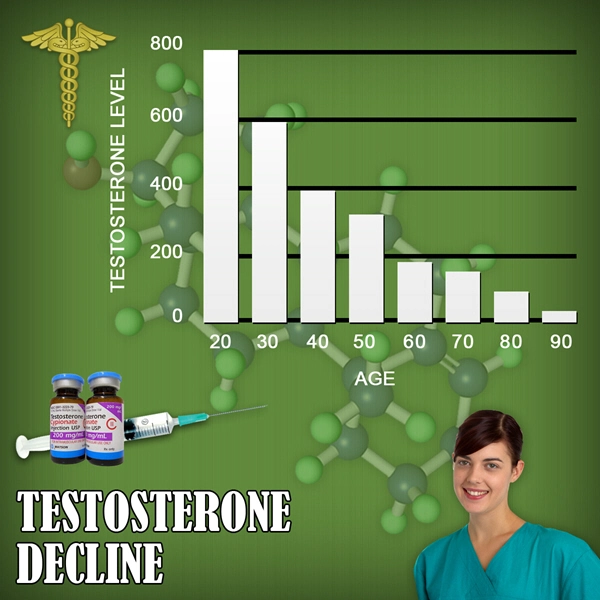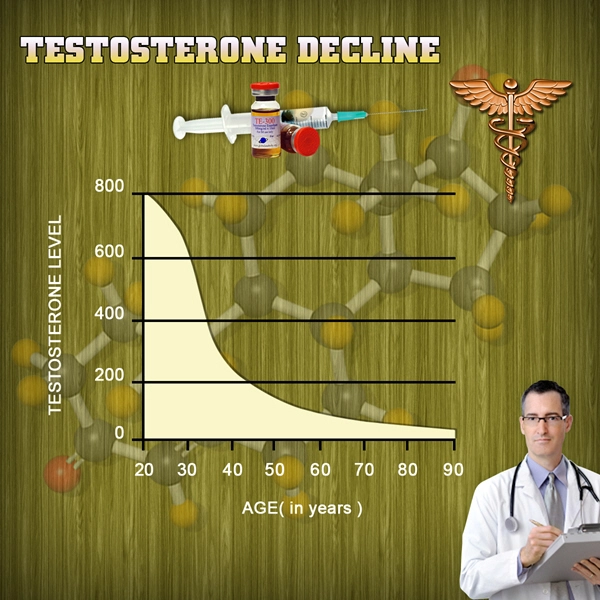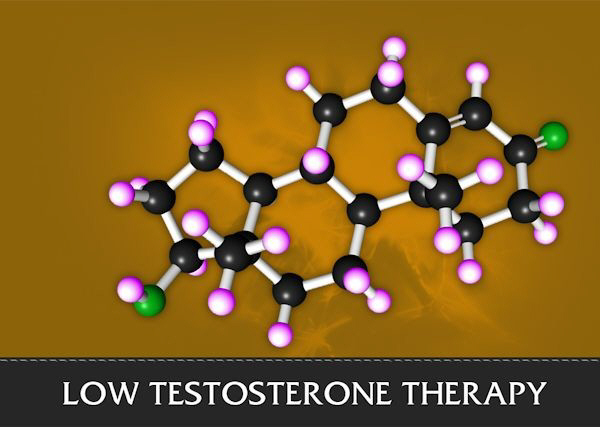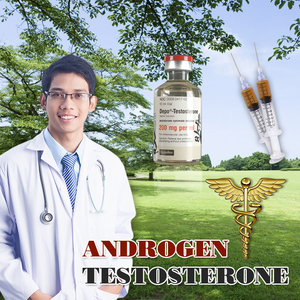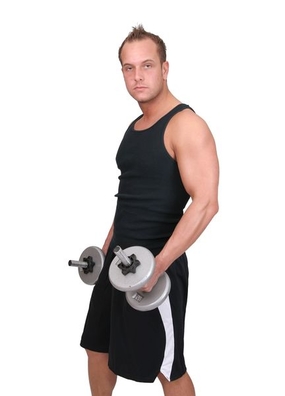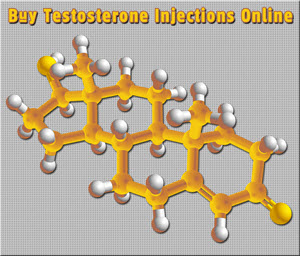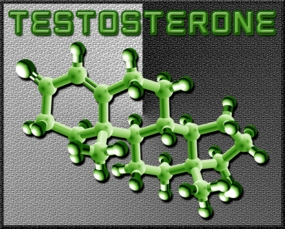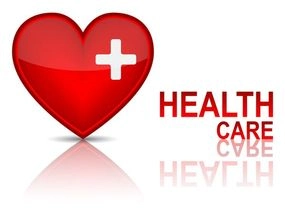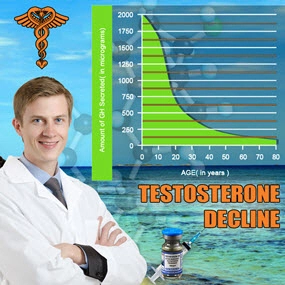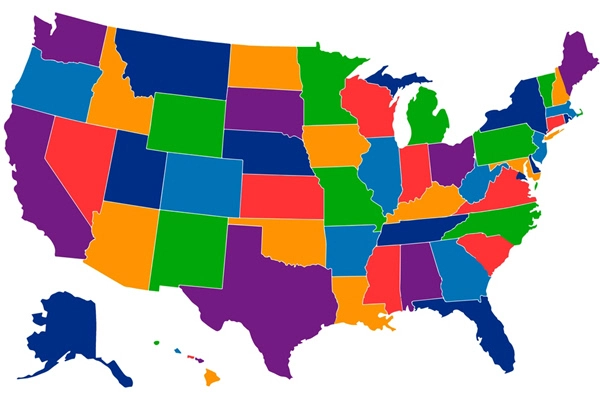Testosterone cypionate injection, USP, for intramuscular injection, contains testosterone cypionate which is the oil-soluble 17 (beta)-cyclopentylpropionate ester of the androgenic hormone testosterone.
Testosterone cypionate is a white or creamy white crystalline powder, odorless or nearly so and stable in air. It is insoluble in water, freely soluble in alcohol, chloroform, dioxane, ether, and soluble in vegetable oils.
The chemical name for testosterone cypionate is androst-4-en-3-one,17-(3-cyclopentyl-1-oxopropoxy)-, (17)-. Its molecular formula is C27H40O3, and the molecular weight 412.61.
The structural formula is represented below:
Testosterone cypionate injection, USP is available in two strengths, 100 mg/mL and 200 mg/mL testosterone cypionate.
Each mL of the 100 mg/mL solution contains:
Each mL of the 200 mg/mL solution contains:
Endogenous androgens are responsible for normal growth and development of the male sex organs and for maintenance of secondary sex characteristics. These effects include growth and maturation of the prostate, seminal vesicles, penis, and scrotum; development of male hair distribution, such as beard, pubic, chest, and axillary hair; laryngeal enlargement, vocal cord thickening, and alterations in body musculature and fat distribution. Drugs in this class also cause retention of nitrogen, sodium, potassium, and phosphorous, and decreased urinary excretion of calcium. Androgens have been reported to increase protein anabolism and decrease protein catabolism. Nitrogen balance is improved only when there is sufficient intake of calories and protein.
Androgens are responsible for the growth spurt of adolescence and for eventual termination of linear growth, brought about by fusion of the epiphyseal growth centers. In children, exogenous androgens accelerate linear growth rates, but may cause disproportionate advancement in bone maturation. Use over long periods may result in fusion of the epiphyseal growth centers and termination of the growth process. Androgens have been reported to stimulate production of red blood cells by enhancing production of erythropoietic stimulation factor.
During exogenous administration of androgens, endogenous testosterone release is inhibited through feedback inhibition of pituitary luteinizing hormone (LH). At large doses of exogenous androgens, spermatogenesis may also be suppressed through feedback inhibition of pituitary follicle stimulating hormone (FSH).
There is a lack of substantial evidence that androgens are effective in fractures, surgery, convalescence, and functional uterine bleeding.
Testosterone esters are less polar than free testosterone. Testosterone esters in oil injected intramuscularly are absorbed slowly from the lipid phase; thus, testosterone cypionate can be given at intervals of two to four weeks.
Testosterone in plasma is 98 percent bound to a specific testosterone-estradiol binding globulin, and about 2 percent is free. Generally, the amount of this sex-hormone binding globulin in the plasma will determine the distribution of testosterone between free and bound forms, and the free testosterone concentration will determine its half-life.
About 90 percent of a dose of testosterone is excreted in the urine as glucuronic and sulfuric acid conjugates of testosterone and its metabolites; about 6 percent of a dose is excreted in the feces, mostly in the conjugated form. Inactivation of testosterone occurs primarily in the liver. Testosterone is metabolized to various 17-keto steroids through two different pathways.
The half-life of testosterone cypionate when injected intramuscularly is approximately eight days.
In many tissues the activity of testosterone appears to depend on reduction to dihydrotestosterone, which binds to cytosol receptor proteins. The steroid-receptor complex is transported to the nucleus where it initiates transcription events and cellular changes related to androgen action.
Testosterone cypionate injection, USP is indicated for replacement therapy in the male in conditions associated with symptoms of deficiency or absence of endogenous testosterone.
Hypercalcemia may occur in immobilized patients. If this occurs, the drug should be discontinued.
Prolonged use of high doses of androgens (principally the 17- alkyl-androgens) has been associated with development of hepatic adenomas, hepatocellular carcinoma, and peliosis hepatis all potentially life-threatening complications.
Geriatric patients treated with androgens may be at an increased risk of developing prostatic hypertrophy and prostatic carcinoma although conclusive evidence to support this concept is lacking.
Edema, with or without congestive heart failure, may be a serious complication in patients with pre-existing cardiac, renal or hepatic disease.
Gynecomastia may develop and occasionally persists in patients being treated for hypogonadism.
This product contains benzyl alcohol. Benzyl alcohol has been reported to be associated with a fatal Gasping Syndrome in premature infants.
Androgen therapy should be used cautiously in healthy males with delayed puberty. The effect on bone maturation should be monitored by assessing bone age of the wrist and hand every 6 months. In children, androgen treatment may accelerate bone maturation without producing compensatory gain in linear growth. This adverse effect may result in compromised adult stature. The younger the child the greater the risk of compromising final mature height.
This drug has not been shown to be safe and effective for the enhancement of athletic performance. Because of the potential risk of serious adverse health effects, this drug should not be used for such purpose.
Patients with benign prostatic hypertrophy may develop acute urethral obstruction. Priapism or excessive sexual stimulation may develop. Oligospermia may occur after prolonged administration or excessive dosage. If any of these effects appear, the androgen should be stopped and if restarted, a lower dosage should be utilized.
Testosterone cypionate should not be used interchangeably with testosterone propionate because of differences in duration of action.
Testosterone cypionate is not for intravenous use.
Patients should be instructed to report any of the following: nausea, vomiting, changes in skin color, ankle swelling, too frequent or persistent erections of the penis.
Hemoglobin and hematocrit levels (to detect polycythemia) should be checked periodically in patients receiving long-term androgen administration.
Serum cholesterol may increase during androgen therapy.
Androgens may increase sensitivity to oral anticoagulants. Dosage of the anticoagulant may require reduction in order to maintain satisfactory therapeutic hypoprothrombinemia.
Concurrent administration of oxyphenbutazone and androgens may result in elevated serum levels of oxyphenbutazone.
In diabetic patients, the metabolic effects of androgens may decrease blood glucose and, therefore, insulin requirements.
Androgens may decrease levels of thyroxinebinding globulin, resulting in decreased total T4 serum levels and increased resin uptake of T3 and T4. Free thyroid hormone levels remain unchanged, however, and there is no clinical evidence of thyroid dysfunction.
Testosterone has been tested by subcutaneous injection and implantation in mice and rats. The implant induced cervical-uterine tumors in mice, which metastasized in some cases. There is suggestive evidence that injection of testosterone into some strains of female mice increases their susceptibility to hepatoma. Testosterone is also known to increase the number of tumors and decrease the degree of differentiation of chemically induced carcinomas of the liver in rats.
There are rare reports of hepatocellular carcinoma in patients receiving long-term therapy with androgens in high doses. Withdrawal of the drugs did not lead to regression of the tumors in all cases.
Geriatric patients treated with androgens may be at an increased risk of developing prostatic hypertrophy and prostatic carcinoma although conclusive evidence to support this concept is lacking.
Testosterone cypionate injection, USP is not recommended for use in nursing mothers.
Safety and effectiveness in pediatric patients below the age of 12 years have not been established.
The following adverse reactions in the male have occurred with some androgens:
Gynecomastia and excessive frequency and duration of penile erections. Oligospermia may occur at high dosages.
Hirsutism, male pattern of baldness, seborrhea, and acne.
Retention of sodium, chloride, water, potassium, calcium, and inorganic phosphates.
Nausea, cholestatic jaundice, alterations in liver function tests, rarely hepatocellular neoplasms and peliosis hepatis (see WARNINGS).
Suppression of clotting factors II, V, VII, and X, bleeding in patients on concomitant anticoagulant therapy, and polycythemia.
Increased or decreased libido, headache, anxiety, depression, and generalized paresthesia.
Hypersensitivity, including skin manifestations and anaphylactoid reactions.
Inflammation and pain at the site of intramuscular injection.
Testosterone is a controlled substance under the Anabolic Steroid Control Act, and testosterone cypionate injection, USP has been assigned to Schedule III.
There have been no reports of acute overdosage with the androgens.
Testosterone cypionate injection, USP is for intramuscular use only.
It should not be given intravenously. Intramuscular injections should be given deep in the gluteal muscle.
The suggested dosage for testosterone cypionate injection, USP varies depending on the age, sex, and diagnosis of the individual patient. Dosage is adjusted according to the patients response and the appearance of adverse reactions.
Various dosage regimens have been used to induce pubertal changes in hypogonadal males; some experts have advocated lower dosages initially, gradually increasing the dose as puberty progresses, with or without a decrease to maintenance levels. Other experts emphasize that higher dosages are needed to induce pubertal changes and lower dosages can be used for maintenance after puberty. The chronological and skeletal ages must be taken into consideration, both in determining the initial dose and in adjusting the dose.
For replacement in the hypogonadal male, 50 to 400 mg should be administered every two to four weeks.
Parenteral drug products should be inspected visually for particulate matter and discoloration prior to administration, whenever solution and container permit. Warming and shaking the vial should redissolve any crystals that may have formed during storage at temperatures lower than recommended.
Testosterone cypionate injection, USP is available as follows:
100 mg/mL:
NDC 54868-3669-0 10 mL multidose vial
Store at 20-25C (68-77F) (see USP Controlled Room Temperature). Protect from light.
03-2009M
U1006824
Manufactured in Canada by
Sandoz Canada Inc. for
Sandoz Inc., Princeton, NJ 08540
Additional barcode labeling by: Physicians Total Care, Inc. Tulsa, Oklahoma 74146
NDC 54868-3669-0
Testosterone CIII
Cypionate
Injection, USP
1,000 mg/10 mL
(100 mg/mL)
FOR INTRAMUSCULAR USE ONLY
Sterile. Protect from light.
Rx only 10 mL Multidose Vial
Physicians Total Care, Inc.
See the original post here:
Testosterone Cypionate Injection, USP - DailyMed
Contact Us Today For A Free Consultation

- Tesosterone - Injectible or Gel? [Last Updated On: November 20th, 2023] [Originally Added On: August 10th, 2011]
- Welcome to autumnhorne Testosterone Cypionate A Potent Long ... [Last Updated On: May 4th, 2015] [Originally Added On: February 19th, 2013]
- Compared – Essential Details In testosterone cypionate | Health ... [Last Updated On: May 4th, 2015] [Originally Added On: May 17th, 2013]
- Testosterone Cypionate And Its Use In Sports » I Click U Click ... [Last Updated On: January 4th, 2018] [Originally Added On: July 23rd, 2013]
- Testosterone Cypionate Advantages And Disadvantages » I Click U ... [Last Updated On: January 18th, 2018] [Originally Added On: July 25th, 2013]
- will testosterone cypionate build muscle | Pro Testosterone [Last Updated On: May 4th, 2015] [Originally Added On: July 30th, 2013]
- Subcutaneous Testosterone Cypionate Injection - Video [Last Updated On: August 22nd, 2013] [Originally Added On: August 22nd, 2013]
- Testosterone Cypionate and Testosterone Enanthate Information [Last Updated On: May 4th, 2015] [Originally Added On: October 31st, 2013]
- Testosterone Cypionate - Testosterone Cypionate .com [Last Updated On: October 31st, 2013] [Originally Added On: October 31st, 2013]
- Testosterone Cypionate - Testosterone Injections | Testosterone ... [Last Updated On: January 21st, 2018] [Originally Added On: October 31st, 2013]
- testosterone cypionate IM : Uses, Side Effects, Interactions ... [Last Updated On: January 5th, 2018] [Originally Added On: November 3rd, 2013]
- Testosterone Cypionate Official FDA information, side effects and ... [Last Updated On: January 13th, 2018] [Originally Added On: November 6th, 2013]
- Testosterone Cypionate - Steroid .com - Anabolic Steroids ... [Last Updated On: January 6th, 2018] [Originally Added On: November 6th, 2013]
- Testosterone Cypionate - Steroidology.com | Uncover the truth ... [Last Updated On: November 25th, 2018] [Originally Added On: November 10th, 2013]
- Testosterone cypionate: Indications, Side Effects, Warnings ... [Last Updated On: January 20th, 2018] [Originally Added On: November 10th, 2013]
- Testosterone Cypionate - Testosterone Injections ... [Last Updated On: January 26th, 2018] [Originally Added On: November 16th, 2013]
- Testosterone Cypionate Official FDA information, side effects ... [Last Updated On: January 23rd, 2018] [Originally Added On: November 17th, 2013]
- Testosterone Cypionate – A Gentle Way to Elevate ... [Last Updated On: November 23rd, 2013] [Originally Added On: November 23rd, 2013]
- Testosterone Cypionate Injection, USP100 mg/mL and 200 mg/mL [Last Updated On: December 23rd, 2017] [Originally Added On: December 6th, 2013]
- Testosterone Cypionate - Steroid .com [Last Updated On: December 16th, 2017] [Originally Added On: December 21st, 2013]
- Testosterone Cypionate for Muscle Building | eHow [Last Updated On: January 12th, 2018] [Originally Added On: December 30th, 2013]
- Testosterone cypionate: Indications, Side Effects ... [Last Updated On: January 20th, 2018] [Originally Added On: January 20th, 2014]
- Testosterone Cypionate - Steroidology.com | Uncover the ... [Last Updated On: November 25th, 2018] [Originally Added On: January 27th, 2014]
- Testosterone Cypionate - Steroids Profile [Last Updated On: October 25th, 2020] [Originally Added On: March 11th, 2014]
- Buy Testosterone Cypionate Injection Online | steroid ... [Last Updated On: October 29th, 2018] [Originally Added On: April 15th, 2014]
- Testosterone Cypionate - Roid-Shop.com [Last Updated On: October 3rd, 2020] [Originally Added On: April 30th, 2014]
- Testosterone Cypionate - FDA prescribing information, side ... [Last Updated On: October 21st, 2020] [Originally Added On: May 2nd, 2014]
- TestosteroneCypionat - TOMA Ardream warrior - priest ANATOLIA - GiYOTiN Clan - Video [Last Updated On: October 8th, 2020] [Originally Added On: May 6th, 2014]
- Testosterone Cypionate A Gentle Way to Elevate ... [Last Updated On: October 6th, 2020] [Originally Added On: May 8th, 2014]
- Derivatives Of Testosterone - Testosterone Cypionate dosage and side effects - Video [Last Updated On: August 30th, 2014] [Originally Added On: August 30th, 2014]
- Derivatives Of Testosterone - What does Testosterone Cypionate do - Video [Last Updated On: November 23rd, 2020] [Originally Added On: August 30th, 2014]
- testosterone cypionate intramuscular : Uses, Side Effects ... [Last Updated On: January 5th, 2018] [Originally Added On: September 1st, 2014]
- Anabolic Steroids List: Benefits of Testosterone Cypionate [Last Updated On: May 4th, 2015] [Originally Added On: September 17th, 2014]
- DailyMed - TESTOSTERONE CYPIONATE- testosterone cypionate ... [Last Updated On: October 25th, 2020] [Originally Added On: September 25th, 2014]
- Genuine Cheap Testosterone Cypionate for Sale Online [Last Updated On: June 19th, 2015] [Originally Added On: January 20th, 2015]
- Testosterone Cypionate A Potent Long-Acting Androgenic Anabolic ... [Last Updated On: June 19th, 2015] [Originally Added On: February 18th, 2015]
- Welcome to Testosterone Cypionate A Potent Androgen [Last Updated On: June 19th, 2015] [Originally Added On: February 18th, 2015]
- Testosterone Cypionate - Growth hormone [Last Updated On: October 4th, 2020] [Originally Added On: March 5th, 2015]
- Depot Testosterone (Testosterone Cypionate) [Last Updated On: October 6th, 2020] [Originally Added On: March 6th, 2015]
- TESTOSTERONE CYPIONATE | XRoids.com [Last Updated On: October 22nd, 2020] [Originally Added On: March 17th, 2015]
- Testosterone Cypionate Injections for Sale - Best Price on ... [Last Updated On: November 16th, 2020] [Originally Added On: April 4th, 2015]
- Buy TESTOSTERONE STEROIDS: Testosterone Cypionate [Last Updated On: October 11th, 2020] [Originally Added On: May 23rd, 2015]
- Testosterone Cypionate for Sale: Injectable Testosterone ... [Last Updated On: November 17th, 2020] [Originally Added On: May 26th, 2015]
- Depo-Testosterone (Testosterone Cypionate Injection) Drug ... [Last Updated On: December 24th, 2017] [Originally Added On: July 3rd, 2015]
- DailyMed - TESTOSTERONE CYPIONATE- testosterone cypionate injection ... [Last Updated On: October 25th, 2020] [Originally Added On: July 19th, 2015]
- DailyMed - DEPO-TESTOSTERONE- testosterone cypionate ... [Last Updated On: October 9th, 2020] [Originally Added On: August 11th, 2015]
- Testosterone - Testosterones.Com [Last Updated On: November 8th, 2020] [Originally Added On: August 29th, 2015]
- Testosterone Cypionate 200mg per ml - LA Pharma - Injectible ... [Last Updated On: October 8th, 2020] [Originally Added On: August 29th, 2015]
- Testosterone Cypionate - buy Testosterone Cypionate ... [Last Updated On: October 15th, 2020] [Originally Added On: August 29th, 2015]
- Testosterone Cypionate - 200mg/ml 10ml/vial EP - PSL [Last Updated On: November 26th, 2020] [Originally Added On: August 29th, 2015]
- Testosterone Cypionate Male Enhancement Information [Last Updated On: October 16th, 2020] [Originally Added On: December 21st, 2015]
- Side Effects of Testosterone Cypionate | eHow [Last Updated On: January 9th, 2018] [Originally Added On: February 8th, 2016]
- TESTOSTERONE CYPIONATE- testosterone cypionate injection - DailyMed [Last Updated On: November 27th, 2020] [Originally Added On: April 13th, 2016]
- testosterone cypionate intramuscular : Uses, Side Effects, Interactions ... [Last Updated On: October 25th, 2020] [Originally Added On: April 13th, 2016]
- About Testosterone Cypionate Injections | Anti-Aging Group [Last Updated On: November 21st, 2020] [Originally Added On: April 26th, 2016]
- Testosterone Cypionate - Steroids for Sale | Buy ... [Last Updated On: October 11th, 2020] [Originally Added On: May 1st, 2016]
- DailyMed - DEPO-TESTOSTERONE- testosterone cypionate injection, solution [Last Updated On: October 20th, 2020] [Originally Added On: May 2nd, 2016]
- Depo-Testosterone (Testosterone Cypionate Injection) - RxList [Last Updated On: November 1st, 2020] [Originally Added On: May 6th, 2016]
- Benefits of Testosterone Cypionate - Testosterone ... [Last Updated On: December 10th, 2017] [Originally Added On: June 16th, 2016]
- Testosterone Cypionate Cycle - Testosterone Cypionate .com [Last Updated On: November 18th, 2020] [Originally Added On: June 23rd, 2016]
- Testosterone cypionate - about Anabolic Steroids [Last Updated On: November 22nd, 2020] [Originally Added On: June 23rd, 2016]
- Testosterone cypionate: Indications, Side Effects, Warnings - Drugs.com [Last Updated On: October 31st, 2020] [Originally Added On: August 14th, 2016]
- Testosterone Cypionate Injectable [Last Updated On: September 17th, 2023] [Originally Added On: April 7th, 2020]
- Testosterone Cypionate | Steroidology.com [Last Updated On: November 29th, 2021] [Originally Added On: May 25th, 2021]
- Testosterone Cypionate Method [Last Updated On: January 17th, 2022] [Originally Added On: January 17th, 2022]
Word Count: 1594

